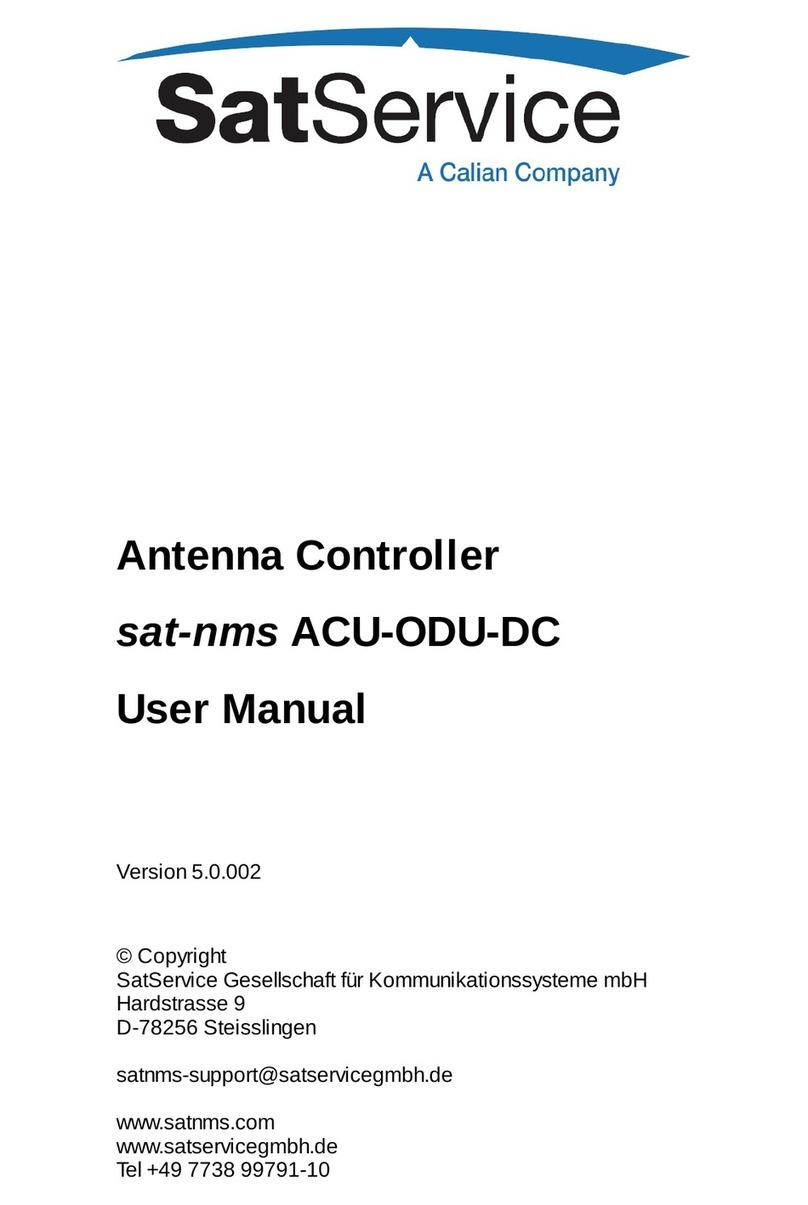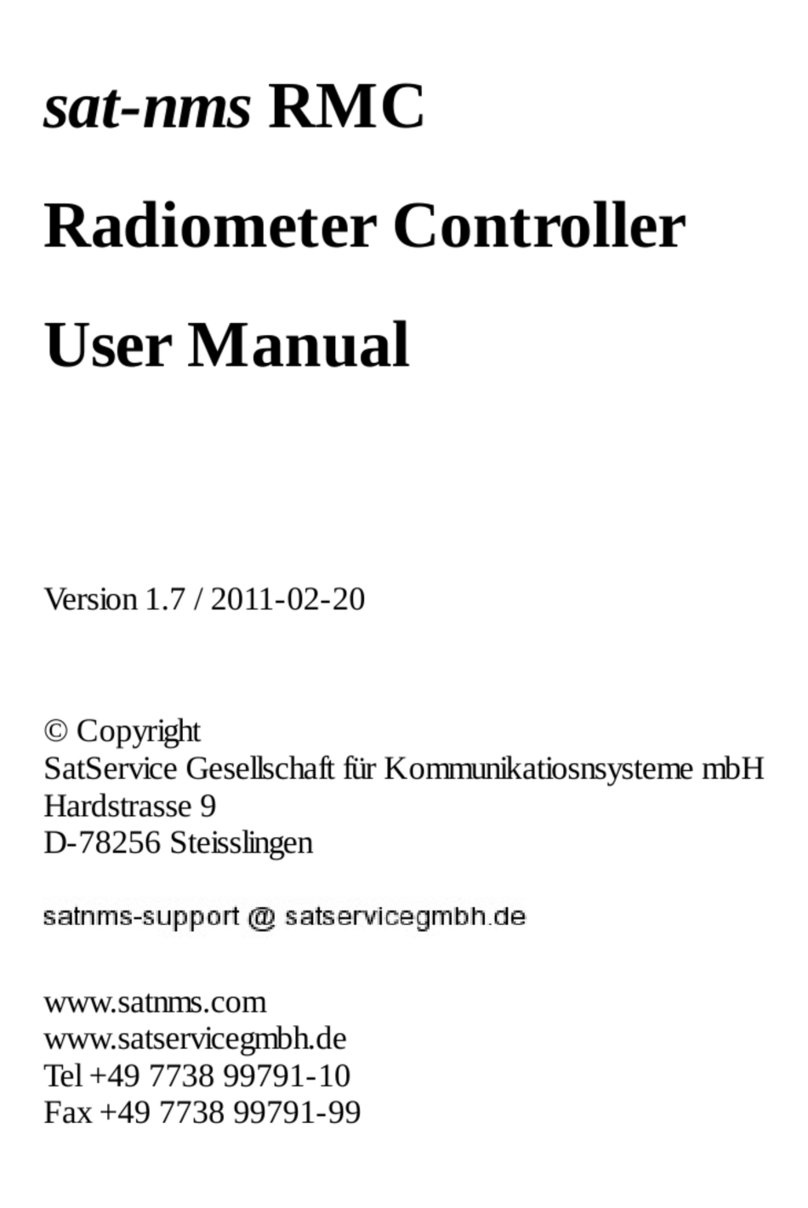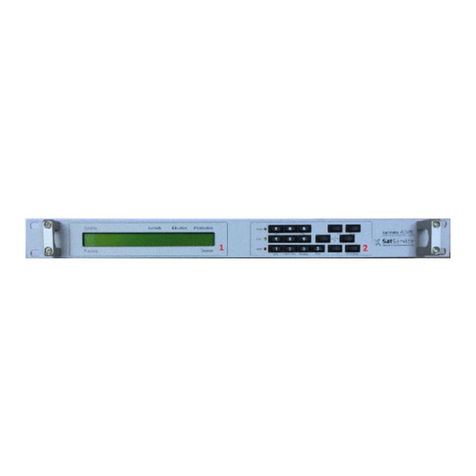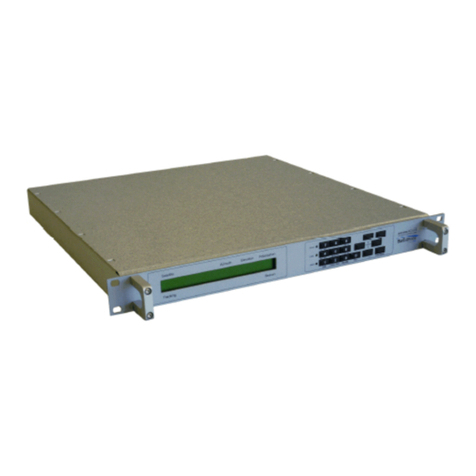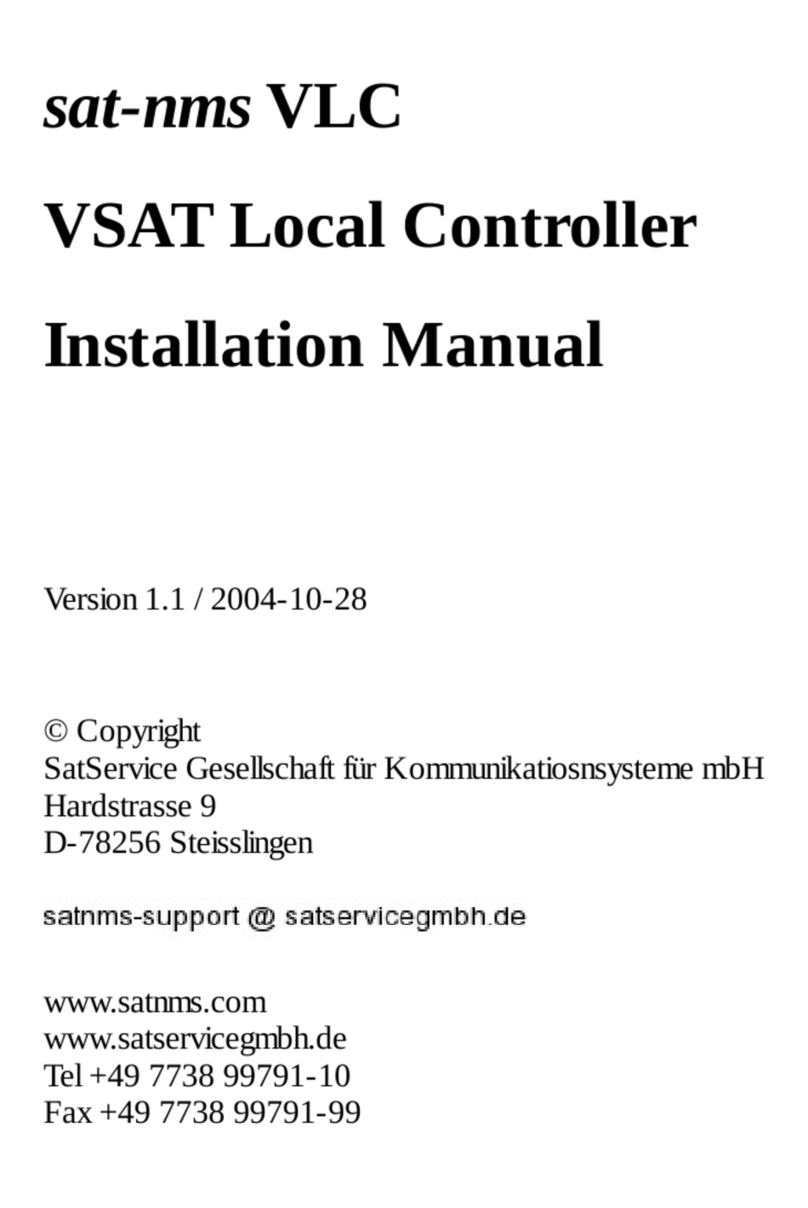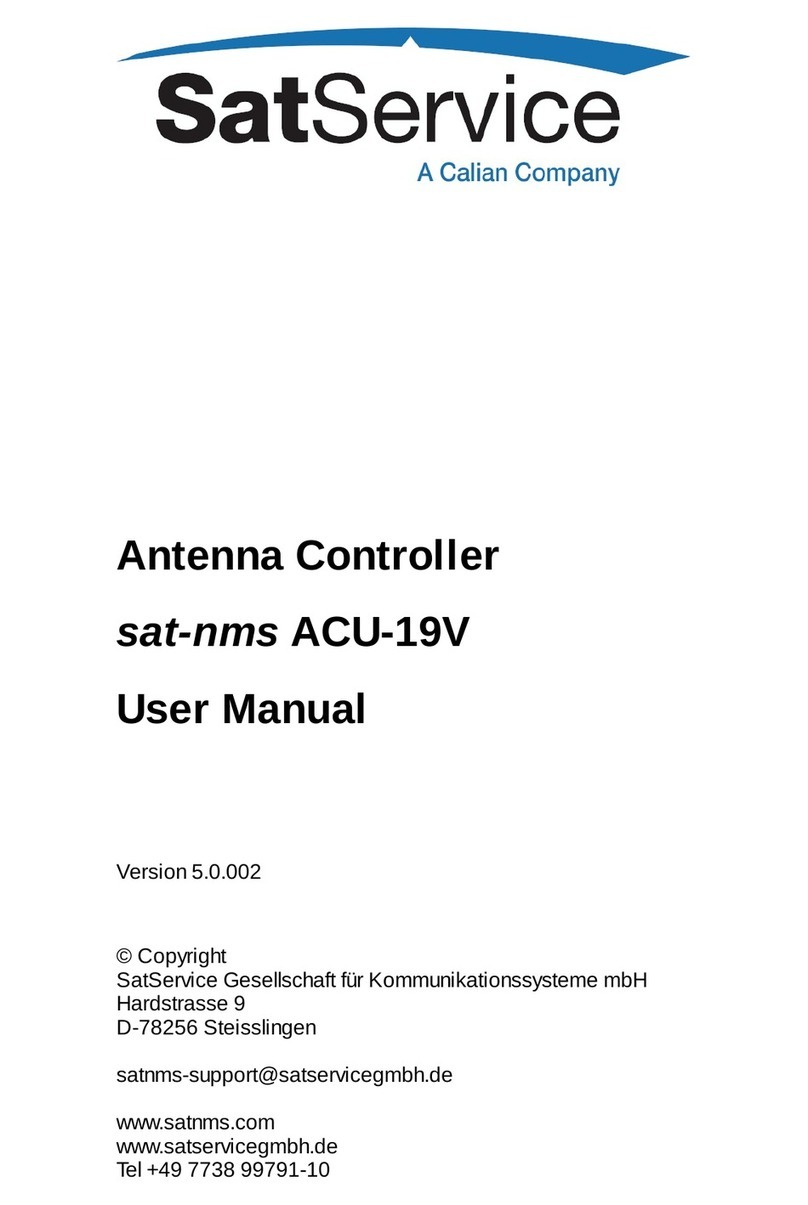
Table Of Contents
1Table Of Contents ...............................................................................................................................
3sat-nms ACU-ODM User Manual .......................................................................................................
41 Introduction ......................................................................................................................................
62 Safety Instructions ...........................................................................................................................
73 The sat-nms ACU-ODM ..................................................................................................................
74 Installation ........................................................................................................................................
74.1 Mechanical installation ..............................................................................................................
84.2 Interfaces to the Antenna, Pin descriptions ...............................................................................
84.2.1 Connector Layout ................................................................................................................
84.2.2 Pin descriptions ..................................................................................................................
214.2.3 Power Supply Cabling .......................................................................................................
214.3 Start-up ....................................................................................................................................
224.3.1 Setting the IP Address .......................................................................................................
234.3.2 Limit switches ...................................................................................................................
234.3.3 Angle detectors .................................................................................................................
244.3.4 Motors ...............................................................................................................................
244.3.5 Pointing/ Tracking ..............................................................................................................
244.3.6 Backup of ACU settings ....................................................................................................
255 Operation .......................................................................................................................................
265.1 The Web-based User Interface ...............................................................................................
275.2 Antenna Pointing ......................................................................................................................
295.3 Target Memory .........................................................................................................................
305.4 Tracking Parameters ...............................................................................................................
325.5 Test Page ................................................................................................................................
345.6 Setup .......................................................................................................................................
405.7 Handheld Terminal ...................................................................................................................
416 Frontpanel operation ......................................................................................................................
436.1 Display mode ..........................................................................................................................
436.2 The main menu .......................................................................................................................
446.3 Select targets ..........................................................................................................................
446.4 Set tracking mode ...................................................................................................................
446.5 Step move ...............................................................................................................................
456.6 Jog mode .................................................................................................................................
456.7 Standby ...................................................................................................................................
456.8 Set az, el, pl by editing Numeric Parameters .........................................................................
467 Remote Control .............................................................................................................................
467.1 General command syntax .......................................................................................................
477.2 The TCP/IP remote control interface ......................................................................................
477.3 The RS232 remote control interface .......................................................................................
487.4 Parameter list ..........................................................................................................................
587.5 One line read via TCP/IP .........................................................................................................
598 Theory of Operation .......................................................................................................................
598.1 Angle Measurement .................................................................................................................
608.2 Pointing / Motor Control ...........................................................................................................
618.3 Steptrack .................................................................................................................................
(C) 2022, SatService GmbH www.satnms.com ACU-ODM-UM-2209 Page 1/73
